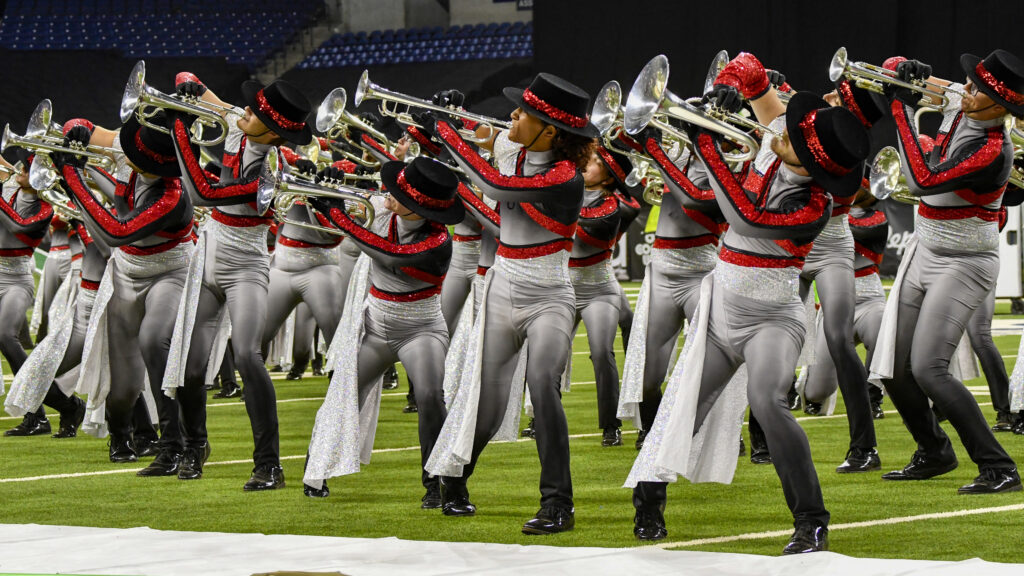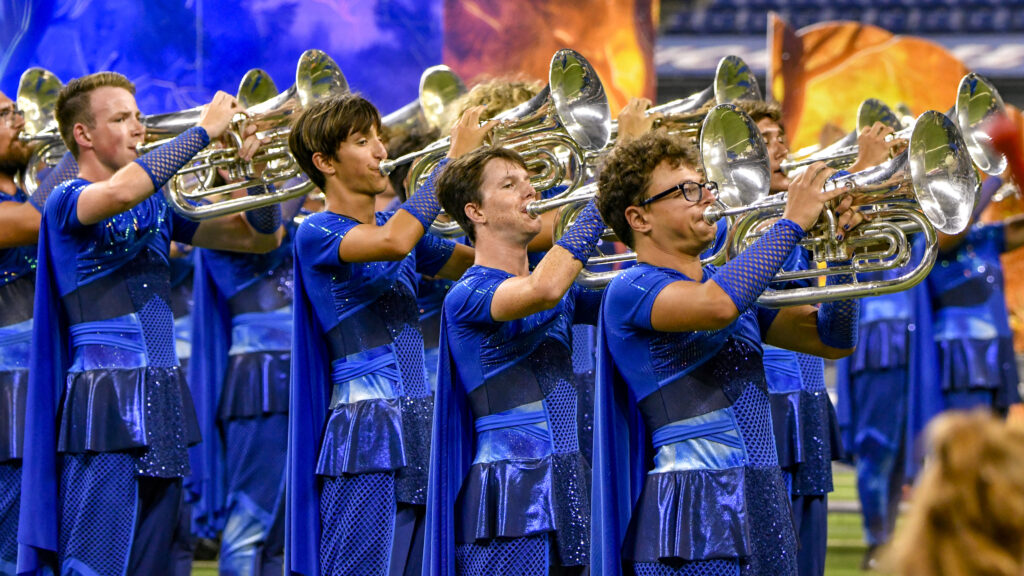By Matt Haines
Armed with a full snare line, the return of basses and all of the quads but one, a 60-plus member horn line, a color guard we haven’t seen since December, and two stunningly attractive drum majors, the Cadets were ready for their last camp before move-in.
The color guard members weren’t the only ones making a return from a winter-long hiatus; their staff, as well as the visual techs, were all making triumphant returns for this weekend, which would culminate with the learning of drill. This weekend the horn line received the end of their show as well as minor changes to the first three productions. “Living With The Past” is our closer. There is some debate as to whether it’s “Living In the Past” or “Living With the Past” … even when I went onto the Internet to find out for sure, it seemed that 70 percent of the sites were using “With,” while 30 percent were using “In.” Also, there’s still no official word on how to pronounce our second tune, “Bouree.” Ian Anderson, if you’d like to chime in, let me know. Back to the closer. There is currently a midi recording of it on the YEA! Web site, so feel free to check it out. The song has a pretty happy mood to it. The whole thing is in 5/4 and transitions straight from “Thick as a Brick.” The pit does most of the work in that transition (accompanied by some horn line BOPS). Before you know it the baritones take the melody for two phrases, pass it to the trumpets for one, full horn line for one — and then we’re into a section full of features. Basically every section gets a phrase to show off. The mellos come in and play a transcribed version of a flute solo Ian Anderson plays on the live recording of “Living With The Past.” This actually makes for a really cool 16-count mello feature. Next we get 16 counts of quads followed by 8 counts of bari/tuba. We’ve only had the features for a camp, but it seems like they might not hose the baritone feature. That would be a first, at least since I’ve been in the corps (laughing bitterly). The basses get 8 counts, trumpets get 16, and snares finish it off with 16. Twelve counts of unison rhythm in the horn line and all of a sudden we’re at 184 beats per minute. A few phrases later we’re moving at 208 beats per minute, running and wheezing to the end! The battery learned until about halfway through “Thick as a Brick” and the pit is partially through the closer. There is a 140-beat accelerating percussion feature in the middle of “Bouree” that should be pretty incredible. Speaking of “Bouree,” Al Chez (from the CBS Orchestra on the Letterman Show) was with us this weekend to tech the trumpets and to write solos for some of our lead trumpets at the end of “Bouree.” I was in the back working the Dr. Beat so I couldn’t hear much, but everyone seemed pretty pumped about it. To be quite honest, I’m not exactly sure what the color guard did. I will go out on a limb and say they spent a lot of time on fundamentals. I was running around getting recordings, scores and blank CDs for the color guard staff so I’m guessing they wrote some of the work for the opener and possibly even taught a little! Marc Sylvester and company have continued to stress the important of coming into spring training in peak physical condition. Most of our visual time this winter has been spent on pilates for strengthening. Some time has been spent on the technique, but the idea is to dig into that in greater detail once we get to spring training. Sunday was dedicated solely to drill and we got through everything we were given, about one-third of the opener. We are now one rehearsal from our first performance of the season, a standstill known as Memorial Brass that features the Cadets, Crossmen and a variety of USSBA All Star groups. Everyone is really excited to move in, and thankfully we’re only a few weeks away. For more personalized accounts of the camp weekend check out Cadet Webmoirs. Thanks for reading and I hope you enjoy the show this summer.





